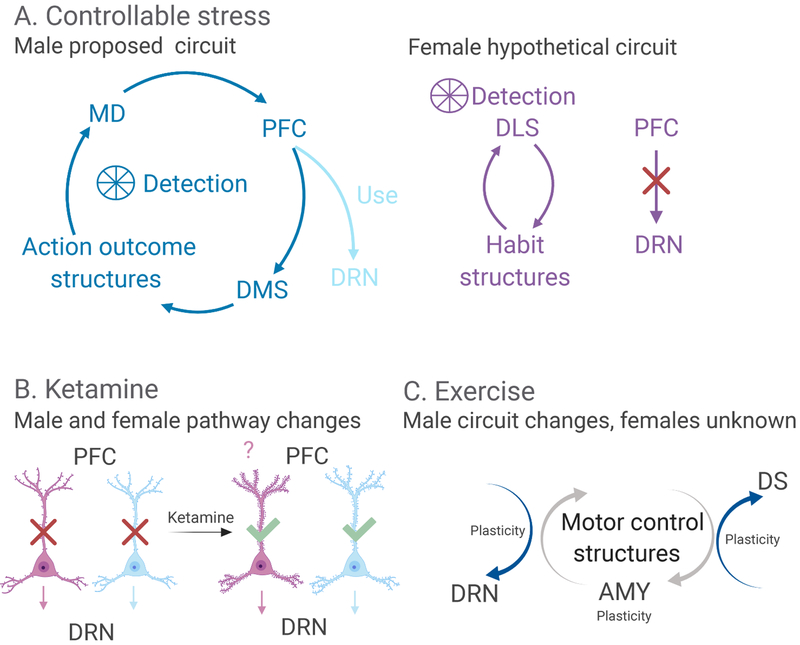Figure 1.
Simplified illustration of the circuits engaged by controllable stress, ketamine and exercise in males and females. (A) Proposed overlapping circuits involved in the two separable features of controllable stress in males (blue) and females (pink). ‘Detection’ of the instrumental wheel-turn response through the corticostriatal action-outcome system (light blue). The ‘use’ pathway (dark blue) showing prelimbic (PL) top-down inhibition over dorsal raphe nucleus (DRN). In females, ‘detection’ of the wheel-turn response may be acquired by the instrumental habit learning system (light pink), which does not lead to PL-DRN engagement (dark pink). (B) Schematic of ketamine’s direct engagement of the PL-DRN pathway in males and females. In both males and females, evidence for ketamine-induced spine formation specific to the PL-DRN pathway is unknown. (C) Motor structures engaged by exercise-induce plasticity in stress-responsive sites. The circuitry underlying the stress protective effects of exercise in females is unknown. Amy, amygdala; DS, dorsal striatum.

